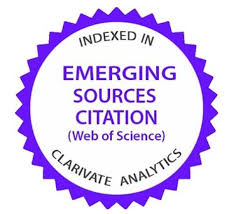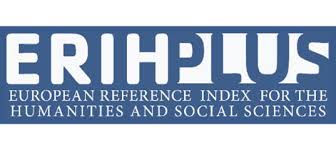“I Make an Oath and Say as Follows”
Yolngu Judicial Discourse on Sacred Art and Copyright
DOI:
https://doi.org/10.35295/osls.iisl/0000-0000-0000-1135Palabras clave:
Yolngu, ley de propiedad intelectual, malversación cultural, arte indígenaResumen
La principal afirmación de este estudio es que hay un repertorio dinámico de conductas lingüísticas y estrategias judiciales indígenas en los casos de malversación de obras de arte yolngu (Australia) que se presentaron en juzgados australianos. El análisis de esos repertorios ayuda a esclarecer las perspectivas indígenas sobre la propiedad de arte sagrado. Este artículo –que cubre un campo casi inédito en la literatura sobre propiedad intelectual indígena– arroja luz sobre las estrategias judiciales de los Yolngu como respuesta al dilema entre el peligro de una pérdida de su identidad cultural y la posible ventaja derivada de un reconocimiento del Estado de los derechos de propiedad intelectual indígenas. Nuestro estudio se basa principalmente en las declaraciones juradas de miembros del pueblo Yolngu y de otras personas. Dichas declaraciones se realizaron durante cinco casos judiciales significativos de los años 90. Las declaraciones juradas demuestran la naturaleza dual del discurso judicial de los Yolngu sobre arte sagrado y derechos de autor, insistiendo simultáneamente en, a la vez que (implícitamente) rechazando una interpretación de las pinturas indígenas como “propiedad intelectual”.
Available from: https://doi.org/10.35295/osls.iisl/0000-0000-0000-1135
Note: This article has been updated on 27 September 2022 to include the following footnote by the author:
"While this article concerns a topic that the author took on in Mazzola (2018, ch. 5)[Indigenous Intellectual Property: A Conceptual Analysis. Milan: Franco Angeli], that topic is here recontextualized and analyzed in a deeper and more analytical way. Section 3 of this article reproduces portions (also and mostly quoting directly from judicial documents) of the historical reconstruction provided in the aforementioned chapter".
Descargas
Metrics
Estadísticas globales ℹ️
|
912
Visualizaciones
|
572
Descargas
|
|
1484
Total
|
|
Citas
Agamben, G., 1995. Homo sacer: Il potere sovrano e la nuda vita. Milan: Einaudi.
Anderson, J.E., 2009. Law, Knowledge, Culture: The Production of Indigenous Knowledge in Intellectual Property Law [online]. Cheltenham/Northampton: Edward Elgar. Available from: https://doi.org/10.4337/9781848447196 [Accessed 29 April 2020]. DOI: https://doi.org/10.4337/9781848447196
Anker, K., 2014. Declarations of Interdependence: A Legal Pluralist Approach to Indigenous Rights. Farnham: Ashgate.
Barron, A., 1997. No Other Law? Author-ity, Property and Aboriginal Art. In: L. Bently and S. Maniatis, eds., Intellectual Property and Ethics. London: Sweet & Maxwell, pp. 39-86.
Carneiro da Cunha, M., 2009. “Culture” and Culture: Traditional Knowledge and Intellectual Rights. Chicago: Prickly Paradigm Press.
Carroll, L., 1872. Through the Looking-Glass. Raleigh: Hayes Barton Press.
Coleman, E.B., 2001. Aboriginal Painting: Identity and Authenticity. The Journal of Aesthetics and Art Criticism [online], 59, pp. 385-402. Available from: https://doi.org/10.1111/0021-8529.00040 [Accessed 29 April 2020]. DOI: https://doi.org/10.1111/0021-8529.00040
Coleman, E.B., 2010. Repatriation and the concept of inalienable possession. In: P. Turnbull and M. Pickering, eds., The Long Way Home: The Meaning and Values of Repatriation. New York: Berghahn Books, pp. 82-96. DOI: https://doi.org/10.1515/9781845459598-009
Descola, P., 2013. Beyond Nature and Culture [online]. Trans.: J. Lloyd. The University of Chicago Press. Available from: https://doi.org/10.7208/chicago/9780226145006.001.0001 [Accessed 29 April 2020]. DOI: https://doi.org/10.7208/chicago/9780226145006.001.0001
Drahos, P., 2014. Intellectual Property, Indigenous People and their Knowledge. Cambridge University Press. DOI: https://doi.org/10.1017/CBO9781107295230
Dumont, L., 1966. Homo hierarchicus: Essai sur le système des castes. Paris: Gallimard.
Farley, C.H., 1997. Protecting Folklore: Is Intellectual Property the Answer? Connecticut Law Review, 30(1), pp. 1-37.
George, A., 2012. Constructing Intellectual Property [online]. Cambridge University Press. Available from: https://doi.org/10.1017/CBO9781139035361 [Accessed 29 April 2020]. DOI: https://doi.org/10.1017/CBO9781139035361
Godelier, M., 1999. The Enigma of the Gift. Trans.: N. Scott. Cambridge: Polity Press. DOI: https://doi.org/10.7146/ta.v0i41.107519
Graham, N., 2011. Lawscape: Property, Environment, Law [online]. London: Routledge-Cavendish. Available from: https://doi.org/10.4324/9780203847169 [Accessed 29 April 2020]. DOI: https://doi.org/10.4324/9780203847169
Groth, S., 2012. Negotiating Tradition: The Pragmatics of International Deliberations on Cultural Property [online]. Göttingen University Press. Available from: https://doi.org/10.4000/books.gup.608 [Accessed 29 April 2020]. DOI: https://doi.org/10.4000/books.gup.608
Hardie, M., 2015. What Wandjuk Wanted? In: M. Rimmer, ed., Indigenous Intellectual Property: A Handbook of Contemporary Research [online]. Cheltenham/Northampton: Edward Elgar, pp. 155-176. Available from: https://doi.org/10.4337/9781781955901.00015 [Accessed 29 April 2020]. DOI: https://doi.org/10.4337/9781781955901.00015
Janke, T., 2003. Minding Culture: Case Studies on Intellectual Property and Traditional Cultural Expressions [online]. Geneva: World Intellectual Property Organization. Available from: https://www.wipo.int/edocs/pubdocs/en/tk/781/wipo_pub_781.pdf [Accessed 29 April 2020].
Johnson, V., 1996. Copyrites: Aboriginal Art in the Age of Reproductive Technologies. Sydney: National Indigenous Arts Advocacy Association/Macquarie University.
Keen, I., 1988. Yolngu Religious Property. In: T. Ingold, D. Riches and J. Woodburn, eds., Property, Power and Ideology in Hunting and Gathering Societies. London: Berg, pp. 272-291. DOI: https://doi.org/10.4324/9781003571988-19
Keen, I., 1994. Knowledge and Secrecy in an Aboriginal Religion: Yolngu of North-East Arnhem Land. Cambridge University Press.
Keen, I., 2011. The Language of Property: Analyses of Yolngu Relations to Country. In: Y. Musharbash and M. Barber, eds., Ethnography and the Production of Anthropological Knowledge: Essays in Honour of Nicolas Peterson. Canberra: Australian National University E Press, pp. 101-119. DOI: https://doi.org/10.22459/EPAK.03.2011.07
Keen, I., 2013. The language of possession: Three case studies. Language in Society [online], 42(2), pp. 187-214. Available from: https://doi.org/10.1017/S0047404513000043 [Accessed 29 April 2020]. DOI: https://doi.org/10.1017/S0047404513000043
Kirshenblatt-Gimblett, B., 1998. Destination Culture: Tourism, Museums, and Heritage. Berkeley: University of California Press. DOI: https://doi.org/10.1525/9780520919488
Lowe, B, 2004. Yolngu-English Dictionary. Winnellie: Aboriginal Resource & Development Services.
Magowan, F., 1997. Waves of Knowing: Polymorphism and Co-Substantive Essences in Yolngu Sea Cosmology. The Australian Journal of Indigenous Education, 29(1), pp. 22-35. DOI: https://doi.org/10.55146/informit.249049275451122
Mazzola, R., 2018. Indigenous Intellectual Property: A Conceptual Analysis. Milan: Franco Angeli.
Mazzola, R., 2019. La prova culturale: Tra epistemologia e antropologia giuridica. Materiali per una storia della cultura giuridica, 1, pp. 211-226.
Meggitt, M.J., 1962. Desert People: A Study of Walbiri Aborigines of Central Australia. Sydney: Angus and Robertson.
Mohr, R., 2002. Shifting Ground: Context and Change in Two Australian Legal Systems. International Journal for the Semiotics of Law [online], 15, pp. 1-24. Available from: https://doi.org/10.1023/A:1015000128505 [Accessed 29 April 2020]. DOI: https://doi.org/10.1023/A:1015000128505
Morphy, F., 1983. Djapu, a Yolngu Dialect. In: R.M.W. Dixon and B.J. Blake, eds., Handbook of Australian Languages (vol. III). Amsterdam: John Benjamins, pp. 3-7.
Morphy, F., 2007. Performing Law: The Yolngu of Blue Mud Bay Meet the Native Title. Process. In: B.R. Smith and F. Morphy, eds., The Social Effects of Native Title: Recognition, Translation, Coexistence [online]. Canberra: Australian National University E Press, pp. 31-58. Available from: https://doi.org/10.22459/SENT.10.2007.02 [Accessed 29 April 2020]. DOI: https://doi.org/10.22459/SENT.10.2007.02
Morphy, F., 2008. Enacting Sovereignty in a Colonized Space: The Yolngu of Blue Mud Bay Meet the Native Title Process. In: D. Fay and D. James, eds., The Rights and Wrongs of Land Restitution: “Restoring What Was Ours”. Abingdon: Routledge, pp. 31-57.
Morphy, H., 1983. “Now You Understand”: An Analysis of the Way Yolngu Have Used Sacred Knowledge to Retain Their Autonomy. In: N. Peterson and M. Langton, eds., Aborigines, Land and Land Rights. Canberra: Australian Institute of Aboriginal Studies, pp. 110-133.
Morphy, H., 1991. Ancestral Connections: Art and an Aboriginal System of Knowledge. University of Chicago Press.
Munn, N., 1970. The Transformation of Subjects into Objects in Walbiri and Pitjantjatjara Myth. In: R.M. Berndt, ed., Australian Aboriginal Anthropology. Nedlands: University of Western Australia Press, pp. 141-162.
Oguamanam, C., 2004. Localizing Intellectual Property in the Globalization Epoch: The Integration of Indigenous Knowledge. Indiana Journal of Global Legal Studies [online], (11)2, pp. 135-69. Available from: https://doi.org/10.2979/gls.2004.11.2.135 [Accessed 29 April 2020]. DOI: https://doi.org/10.1353/gls.2004.0016
Radin, M.J., 1993. Reinterpreting Property [online]. University of Chicago Press. Available from: https://doi.org/10.7208/chicago/9780226702292.001.0001 [Accessed 29 April 2020]. DOI: https://doi.org/10.7208/chicago/9780226702292.001.0001
Rimmer, M., ed., 2015. Indigenous Intellectual Property: A Handbook of Contemporary Research. Cheltenham/Northampton: Edward Elgar. DOI: https://doi.org/10.4337/9781781955901
Rose, C.M., 1994. Property & Persuasion: Essays on the History, Theory and Rhetoric of Ownership. Boulder: Westview Press.
Schebeck, B., 1968. Dialect and Social Groupings in North East Arnhem Land. Canberra: Australian Institute of Aboriginal and Torres Strait Islander Studies (AIATSIS).
St Clair, W., 2010. Metaphors of Intellectual Property. In: R. Deazley, M. Kretschmer and L. Bently, eds., Privilege and Property: Essays on the History of Copyright [online]. Cambridge: OpenBook, pp. 369-395. Available from: https://doi.org/10.11647/OBP.0007.15 [Accessed 29 April 2020]. DOI: https://doi.org/10.11647/OBP.0007.15
Stanner, W.E.H., 1967. Reflections on Durkheim and Aboriginal Religion. In: M. Freedman, ed., Social Organisation: Essays Presented to Raymond Firth. Chicago/New York: Aldine-Class, pp. 217-240. DOI: https://doi.org/10.4324/9781315129662-11
Stanner, W.E.H., 1979. The Yirkkala Land Case: Dress-rehearsal. In: W.E.H. Stanner, ed., White Man Got No Dreaming: Essays 1938-1973. Canberra/Norwalk: Australian National University Press, pp. 324-355.
Weiner, A.B., 1992. Inalienable Possessions: The Paradox of Keeping-While-Giving [online]. Berkeley: University of California Press. Available from: https://doi.org/10.1525/california/9780520076037.001.0001 [Accessed 29 April 2020]. DOI: https://doi.org/10.1525/california/9780520076037.001.0001
Williams, N.M., 1987. The Yolngu and Their Land: A System of Land Tenure and the Fight for Its Recognition. Stanford University Press.
Williams, N.M., 2008. Stanner, Millirpum, and the Woodward Royal Commission. In: M. Hinkson and J. Beckett, eds., An Appreciation of Difference: WEH Stanner: Anthropology and Aboriginal Australia. Canberra: Aboriginal Studies Press, pp. 198-216.
World Intellectual Property Organization, 2008. The Protection of Traditional Cultural Expressions: Draft Gap Analysis (WIPO/GRTKF/IC/13/4(B) REV) [online]. Geneva: WIPO, 11 October. Available from: www.wipo.int/meetings/en/doc_details.jsp?doc_id=109673 [Accessed 16 September 2019].
World Intellectual Property Organization, 2010. List and Brief Technical Explanation of Various Forms in which Traditional Knowledge may be Found (WIPO/GRTKF/IC/17/INF/9) [online]. Geneva: WIPO, 5 November. Available from: https://www.wipo.int/meetings/en/doc_details.jsp?doc_id=147152 [Accessed 16 September 2019].
Descargas
Publicado
Cómo citar
Número
Sección
Licencia
Derechos de autor 2020 Riccardo Mazzola

Esta obra está bajo una licencia internacional Creative Commons Atribución-NoComercial-SinDerivadas 4.0.
Los autores conservan el copyright de sus trabajos, que se publicarán en OSLS bajo una licencia Creative Commons Reconocimiento NoComercial SinObraDerivada. Puede consultar más detalles en: http://es.creativecommons.org/licencia/. Si no está de acuerdo con esta licencia, por favor, póngase en contacto con nosotros.
El autor concede los permisos necesarios para difundir la información bibliográfica del artículo, incluyendo el resumen, y autorizar a otros, incluyendo las bases de datos bibliográficas, de índices y servicios de alerta de contenidos, a copiar y comunicar esta información.
Para más información sobre los permisos para distribuir su artículo en cada fase de la producción, por favor, lea nuestra Política de Autoarchivo y Divulgación (en inglés).
Las condiciones de copyright con el nombre de autores y co-autores, y la licencia Creative Commons se mostrarán en el artículo. Estas condiciones se deben aceptar como parte del proceso de envío de un artículo a la revista. Por favor, asegúrese de que todos los co-autores se mencionan correctamente, y que entienden y aceptan estos términos.






















